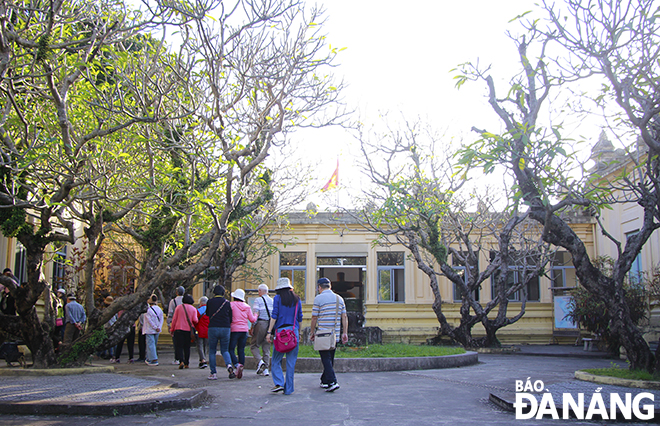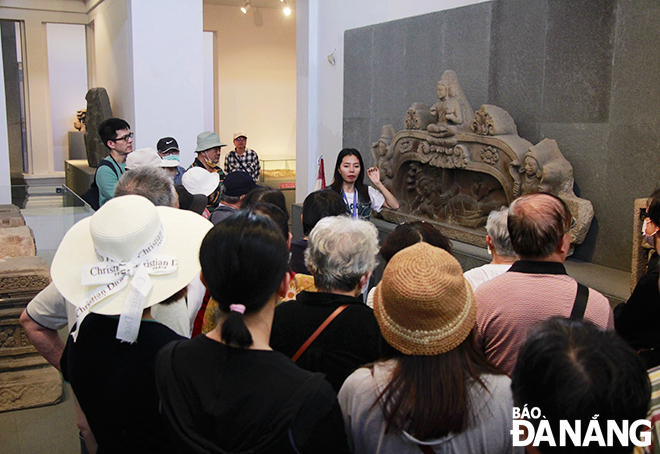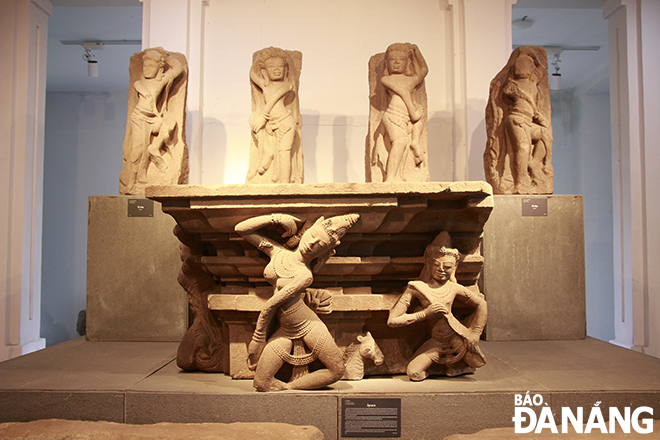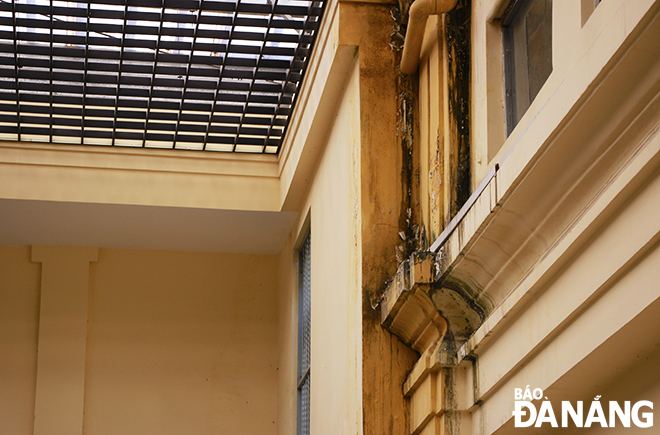Featuring French architectural style, the Da Nang Museum of Cham Sculpture boasts over 100 years of preserving many valuable artifacts, including 9 national treasures.
 |
| The Museum of Cham Sculpture was built in 1915, and it opened its doors to visitors in 1919. The museum features French architectural style in the early 20th century. |
Over time, the museum has shown signs of deterioration, causing loss of aesthetics and potentially affecting displayed antiques.
As observed by our reporter in the museum's exhibition spaces, many walls suffer from peeling paint, dampness, and black mould growth. In the exhibition area for national treasures, the walls have green and white mould, seriously affecting the protection and preservation of artifacts.
The cause of the abovementioned situation is due to harsh weather and frequent storms. Therefore, even though the museum was upgraded nearly 10 years ago, it is still quickly degraded and damaged.
A representative of the Museum of Cham Sculpture said that the museum is the only unit of Da Nang's cultural industry to have exercised complete autonomy since 2015. Every year, the museum welcomes about 200,000 visitors, most of whom are international visitors, contributing billions of VND to the State budget.
However, during the 2020-2022 period, the museum witnessed a significant decline in the number of visitors due to the impact of COVID-19, resulting in limited revenue. Therefore, the museum can’t afford repairing and waterproofing costs.
 |
| In 2021, the museum building was recognised as a municipal-level historical relic by the People's Committee. |
 |
| With a large number of precious artifacts, the Museum of Cham Sculpture attracts a large number of visitors, especially international visitors. In the photo: Tourists visit the Brahma My Son E1 Relief - a national treasure at the museum. |
 |
| The Tra Kieu Apsara Relief, which is one of the artifacts preserved at the Museum of Cham Sculpture, has just been recognised by the Prime Minister as a national treasure. |
 |
| Over time, many of the museum's display spaces, including the national treasure display area, began to show signs of deterioration. In the photo: The display area for the national treasure - Shiva My Son C1 statue suffers from peeling paint and dampness. |
 |
| Walls have green and white mould, seriously affecting the protection and preservation of artifacts |
 |
| The cause of the deterioration is due to the harsh weather in the central region. Also, the museum does not have the funds to upgrade because of a significant decrease in the number of visitors as a result of COVID-19. |
 |
| The functional units need to soon find a solution to handle this situation to protect the museum's artifacts. |
Reporting by THIEN DUYEN – Translating by M.DUNG
.
















